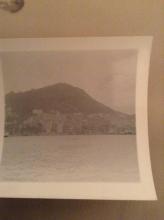We've recently posted Rob's list is of batteries built by the British armed forces, but T reminds us there were also several batteries in the area built by the Chinese army of the time. Here is a map of the Places tagged Imperial Chinese Military Sites:
Places with this tag are:
- Built & manned by the Chinese Empire. So nothing built post-1911, and nothing built by local inhabitants for their own defence (eg the New territories' walled villages).
- In Hong Kong or the immediate vicinity.
Here are additional notes moved over from the British Batteries thread:
T:
Other than the Tung Chung (Small) Battery), just laying out the others I know of first:
1. Tung Chung Fort, already marked. All we need is a new tag of Chinese Battery there;
2. Fan Lau Fort;
3. Koon Chung Fort (A battle was fought there with the Brits). The area is around today's Jordan Road/Koon Chung Market;
4. Ching Ying Fort (possibly located in present day Kowloon Park in TST), dismantled after HK Island is occupied;
5. Tung Lung Chau Fort
6. Beacon Hill close to Lion Rock. The construction of the modern day rada station appeared to have the old beacon site destroyed though.
I will try to mark them up later.
C:
Thanks for the list! I wonder if the Kowloon Walled City should be included.
The two Qing batteries are mentioned in Section 10.2.2 of the Environmental Impact Assessment Report for East Rail Extension - Hung Hom to Tsim Sha Tsui (EIA-032/1999). About the Ching Ying Battery (懲膺炮台, Chengying Battery) in Tsim Sha Tsui, the report stated that "the exact location of the battery is unknown", but from Figure 10.5, it is quite clear that it was located on the western slope of the hill on which 1881 Heritage (former Marine Police Headquarters) now stands. It was renamed Fort Victoria during its brief occupation by British Forces in 1841.
As for Lam Chung Battery (臨衝砲台, Linchong Battery) in Kwun Chung, I found a wiki page on it: Kwun Chung Battle Wiki. It is great that someone is raising awareness of this event.
T:
I believe there might be something in Tuen Mun/Castle Peak as well as that is known to be a location where previous dynasties posted their military presence there. I have a faint impression that it could be dated back to the Tang Dynasty. After all, the word 屯 (tuen) was a verb meaning stationing military presence.
On the It would be very difficult to rectify the location with reference to old writings dated back to Qing or even Ming Dynasties. There are some senior hikers out there saying there used to be other beacons on some hill tops other than 'Beacon Hill' in Kowloon. They said one might be in the Tsuen Wan area and another in Castle Peak. They are refering to old writing like 新安縣誌 for reference.
On the other hand, if we are to include Walled Kowloon City then we might have to include similar facilities in Guangdong Province as well. If we do not do so, it would not reveal their significance. Anyway, either way it would mean more reading before doing so. <Read more ...>

